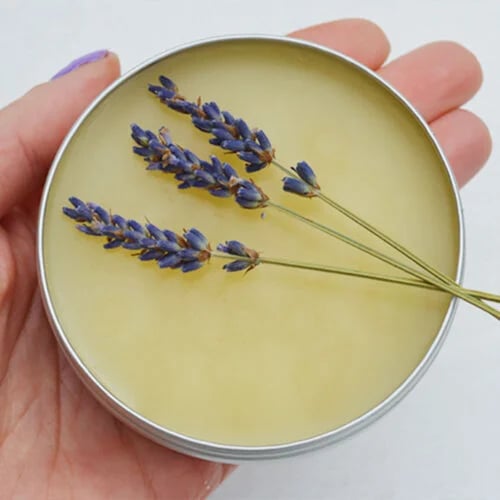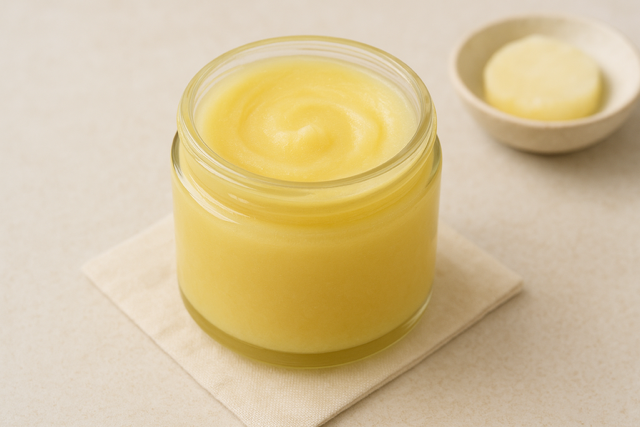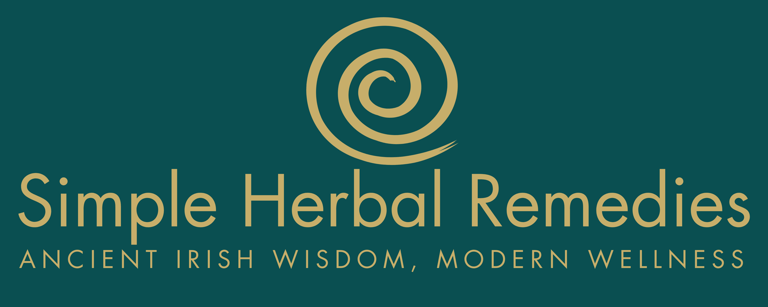DIY Cleansing Balm with Lavender Recipe | Natural Makeup Remover
Learn how to make a luxurious DIY cleansing balm with lavender that removes waterproof makeup naturally. This gentle oil cleanser works for all skin types. Complete recipe with lavender-infused oil.
SKINCARE RECIPES
9 min read


DIY Lavender Cleansing Balm: Luxury Makeup Remover Recipe
This post may contain affiliate links.
Looking for a gentle yet powerful way to remove stubborn makeup while treating your skin to spa-level luxury? This homemade lavender cleansing balm combines the effectiveness of oil cleansing with the soothing aromatherapy of lavender, creating a transformative skincare experience right in your own bathroom.
Why Cleansing Balms Are Taking Over Skincare
Cleansing balms have become one of the hottest products in skincare, and for good reason. While they've been around for years, their superior cleansing power is finally getting the recognition it deserves. These heavy-duty cleansers effortlessly remove even the most waterproof, long-wearing makeup while remaining gentle enough for daily use.
The Surprising Truth: Even if you have oily skin, oil-based cleansing balms work beautifully. While oily skin types might naturally shy away from oil-based products, cleansing balms actually help balance sebum production and won't clog pores. The science? Oil dissolves oil, effectively removing excess sebum, makeup, and impurities without stripping your skin's natural moisture barrier.
The Magic of This Lavender Cleansing Balm
This gentle lavender cleansing balm transforms your daily cleansing routine into a moment of pure indulgence. As you massage it onto your skin, it releases a calming lavender fragrance that soothes your senses while the balm melts away every trace of makeup, sunscreen, and daily grime.
The formula features natural ingredients including lavender-infused oil, beeswax, and a plant-based emulsifier that create a luxurious balm-to-oil texture. Upon contact with your skin's warmth, the solid balm melts into a silky oil that dissolves makeup and impurities instantly, then emulsifies with water for easy, residue-free removal.
Why Lavender-Infused Oil Instead of Essential Oil?
This recipe uses lavender-infused oil (also called macerated oil) rather than pure lavender essential oil, and there's an important reason for this choice. While essential oils are wonderful ingredients, pure lavender essential oil can be quite potent and may irritate sensitive skin when used in high concentrations.
Lavender-infused oil provides all the calming, aromatherapeutic benefits of lavender in a gentler form that's perfect for facial skincare. The infusion process extracts the beneficial compounds from dried lavender flowers into carrier oil, creating a beautifully fragrant ingredient without the intensity of concentrated essential oil. This makes it suitable for daily use on all skin types, including sensitive and reactive skin.
Important Note on Essential Oils: If you do choose to work with essential oils in skincare recipes, always be aware of dermal limits. Some essential oils can cause irritation or sensitization when used improperly, which is why the macerated oil approach is ideal for this cleansing balm.
What You'll Need
For the Lavender-Infused Oil:
60ml fractionated coconut oil
15g (1 tbsp) organic dried lavender buds
For the DIY Lavender Cleansing Balm:
60ml lavender-infused oil (from above)
30g (2 tbsp) beeswax pellets
15g (1 tbsp) Olivem 1000 (natural plant-based emulsifier)
A few drops of natural purple food colouring (optional, for aesthetics)
Equipment Required:
Saucepan for double boiler or dedicated double boiler
Heat-safe glass bowl or container
Fine mesh strainer or cheesecloth
Mini whisk
Glass cosmetic jar (60-100ml capacity)
Measuring spoons
Spatula
How to Make Your Lavender Cleansing Balm
Part 1: Creating Lavender-Infused Oil
Step 1: Set up your double boiler by placing a heat-safe glass container into a saucepan with a few inches of water. The container should sit above the water, not in it.
Step 2: Add the fractionated coconut oil and dried lavender flowers to your double boiler container. Turn the heat to medium to warm the oil gently.
Step 3: Once the oil is heated, reduce the heat to low and allow the mixture to simmer gently for at least one hour, or until the oil becomes beautifully fragrant. Stir periodically—every 10-15 minutes—to help release the flowers' aromatic compounds into the oil. For maximum fragrance and benefits, infuse for 2-3 hours if possible.
Step 4: Once your lavender oil has finished infusing, remove it from heat and strain out all the flower material using a fine mesh strainer or cheesecloth. Press gently on the flowers to extract all the infused oil. Your lavender-infused oil is now ready to use.
Part 2: Making the Lavender Cleansing Balm
Step 1: Place the beeswax pellets into your clean double boiler and melt over medium heat. Add the Olivem 1000 emulsifier during this step, stirring to combine.
Step 2: Once the waxes have completely melted into a clear liquid, add your lavender-infused oil. You'll notice some of the wax re-solidifying when the cooler oil hits it—this is completely normal. Use your whisk to mix the oil and wax together thoroughly.
Step 3: Continue heating the mixture at medium heat, whisking frequently to ensure everything combines smoothly. Maintain this heat for 5 minutes, whisking every 30-60 seconds to prevent separation.
Step 4: After 5 minutes, turn off the heat immediately. If you want a beautiful purple-tinted balm, add a few drops of natural purple food coloring at this point. Whisk vigorously until the color is completely and evenly incorporated throughout the balm. This step is purely aesthetic—your balm will work perfectly without color.
Step 5: Carefully transfer your liquid cleansing balm to a small glass storage container using a spatula to scrape every last bit from the bowl. Work quickly, as the balm will begin to set as it cools.
Step 6: Place the filled container in the refrigerator immediately to solidify. Allow it to set for at least 30 minutes, or until completely firm. Refrigerating the balm ensures a smooth, gel-like texture without lumps or graininess that can occur with slow cooling.
Step 7: Once your cleansing balm has fully set, remove it from the refrigerator and allow it to come to room temperature before first use. After this initial setting, your balm can be stored at room temperature away from direct heat and sunlight.
How to Use Your Lavender Cleansing Balm
Step 1: Start with dry hands and a dry face. This is crucial—oil and water don't mix initially, so you want to apply the balm to completely dry skin for maximum effectiveness.
Step 2: Using clean, dry fingers or a spatula, scoop out a small amount of balm (about a teaspoon—a little goes a long way).
Step 3: Warm the balm between your palms for a few seconds until it begins to melt into an oil.
Step 4: Massage the melted balm all over your face in circular motions, paying special attention to areas with heavy makeup, sunscreen, or waterproof products. Take your time with this step—30-60 seconds of massage helps dissolve everything thoroughly while boosting circulation.
Step 5: Add a splash of warm water to your face and continue massaging. The Olivem 1000 emulsifier will cause the oil to turn milky white as it emulsifies with water, allowing for easy removal.
Step 6: Rinse thoroughly with warm water, or remove with a damp, soft cloth or muslin. Your skin should feel clean, soft, and nourished—never tight or stripped.
Step 7: Follow with your regular cleansing routine if you practice double cleansing, or proceed directly to toner, serum, and moisturizer.
Understanding the Key Ingredients
Fractionated Coconut Oil serves as the perfect carrier oil for infusion because it remains liquid at room temperature, absorbs quickly, and is non-comedogenic (won't clog pores).
Dried Lavender Buds release calming compounds including linalool and linalyl acetate, which provide anti-inflammatory, antibacterial, and aromatherapeutic benefits.
Beeswax creates the solid balm texture and provides a protective barrier on skin while delivering vitamin A for cell regeneration.
Olivem 1000 is a natural, plant-derived emulsifier that allows the oil-based balm to rinse away cleanly with water, preventing greasy residue. This ingredient is what makes cleansing balms so user-friendly compared to straight oils.
Natural Purple Food Colouring (optional) adds visual appeal but provides no skincare benefits. Feel free to omit for an all-natural, uncolored balm.
Benefits of This Cleansing Balm
Deep Cleansing: Effectively removes waterproof makeup, SPF, excess sebum, and environmental pollutants without harsh scrubbing.
Gentle Yet Effective: Suitable for all skin types, including sensitive, dry, oily, combination, and mature skin.
Nourishing: Unlike foaming cleansers that can strip skin, this balm maintains your skin's natural moisture barrier.
Aromatherapeutic: The lavender scent promotes relaxation, reduces stress, and transforms cleansing into a mindful self-care ritual.
Non-Comedogenic: Despite being oil-based, it won't clog pores when properly removed.
Sustainable: Making your own balm reduces plastic waste from commercial packaging and eliminates unnecessary chemicals.
Customizing Your Cleansing Balm
For Oily/Acne-Prone Skin: Infuse with tea tree or chamomile instead of lavender for additional antibacterial benefits.
For Dry/Mature Skin: Replace half the beeswax with shea butter for extra nourishment, or add 5ml of rosehip seed oil for anti-aging benefits.
For Sensitive Skin: This lavender version is already gentle, but you can infuse with calendula flowers for extra soothing properties.
Scent Variations: Try rose petals, chamomile flowers, or a combination of herbs for different aromatherapy experiences.
Vegan Option: Replace beeswax with candelilla wax or carnauba wax (you may need to adjust ratios slightly).
Storage and Shelf Life
Store your lavender cleansing balm in a cool, dry place away from direct sunlight and heat sources. The airtight glass container will protect it from oxidation and contamination.
Shelf Life: When made with proper hygiene practices and stored correctly, this balm will last 6-9 months. The beeswax acts as a natural preservative, and using dry hands or a clean spatula for each application prevents bacterial contamination.
Signs of Spoilage: Discard if you notice any rancid smell, color changes, or mold growth (though this is rare with proper storage).
Tips for Success
Use Dried Flowers: Only use dried lavender buds, never fresh. Fresh flowers contain water that can introduce bacteria and shorten shelf life.
Don't Overheat: Keep temperatures low during infusion. High heat can degrade beneficial compounds in both the oil and lavender.
Sterilize Containers: Ensure your storage jar is completely clean and dry before filling.
Patience with Infusion: The longer you infuse (within reason—up to 3 hours), the more fragrant your oil becomes.
Work Quickly When Pouring: The balm begins setting immediately after removing from heat, so have your container ready.
Always Use Dry Hands: Introducing water into your balm container can encourage bacterial growth.
Troubleshooting Common Issues
Balm is Too Hard: You used too much beeswax. Next time, reduce beeswax by ½ tablespoon.
Balm is Too Soft: Not enough beeswax. Add an extra ½ tablespoon of beeswax when remelting.
Grainy Texture: The balm cooled too slowly. Always set in the refrigerator for smooth texture.
Doesn't Emulsify Well: Ensure you're using enough Olivem 1000 and that it was fully melted before adding oil.
Not Fragrant Enough: Infuse longer next time, or use more lavender buds (up to 2 tablespoons per 60ml oil).
Why Oil Cleansing Works for All Skin Types
Many people worry that oil-based cleansers will make oily skin worse or cause breakouts, but science tells a different story. The principle "like dissolves like" means that oil-based products are actually the most effective at dissolving sebum, makeup, and oil-based impurities.
Oil cleansing helps regulate your skin's natural oil production. When you strip skin with harsh, foaming cleansers, your sebaceous glands go into overdrive producing more oil to compensate. Oil-based cleansing maintains balance, signaling to your skin that it doesn't need to produce excess sebum.
The key is proper removal. Thanks to the Olivem 1000 emulsifier in this recipe, the balm rinses away cleanly without leaving a greasy residue, making it suitable even for those prone to congestion.
Where to Source Your Ingredients
Quality ingredients make a noticeable difference in homemade skincare. Look for organic dried lavender buds, food-grade or cosmetic-grade beeswax, and pure fractionated coconut oil. Olivem 1000 can be purchased from specialty cosmetic ingredient suppliers online.
Q: Does cleansing balm clog pores? A: No, when properly formulated and removed, cleansing balms don't clog pores. The emulsifier (Olivem 1000) allows the balm to rinse away completely. Oil actually dissolves sebum and makeup more effectively than water-based cleansers.
Q: Can I use cleansing balm on oily skin? A: Yes! Cleansing balms work beautifully on oily skin. They help balance sebum production and remove excess oil without stripping skin, which can actually reduce oiliness over time.
Q: How long does homemade cleansing balm last? A: When stored properly in an airtight container and kept away from moisture, this cleansing balm lasts 6-9 months. The beeswax acts as a natural preservative.
Q: What is Olivem 1000 and where can I buy it? A: Olivem 1000 is a plant-based emulsifier that allows oil-based products to rinse away with water. You can purchase it from cosmetic ingredient suppliers online.
Q: Can I use fresh lavender instead of dried? A: No, always use dried lavender. Fresh flowers contain water that can introduce bacteria and significantly shorten your product's shelf life.
Q: Do I need to double cleanse after using cleansing balm? A: It depends on your preference. Many people find cleansing balm alone sufficient, while others prefer to follow with a gentle water-based cleanser (double cleansing method).
Q: Will this remove waterproof mascara? A: Yes! Cleansing balms excel at removing waterproof makeup, including mascara and long-wear foundation. Massage gently over lashes and rinse thoroughly.
Q: Can I make this without beeswax (vegan option)? A: Yes, substitute candelilla wax or carnauba wax for beeswax. You may need to adjust the ratio slightly as these waxes have different melting points.
Q: Why did my cleansing balm turn grainy? A: Grainy texture occurs when the balm cools too slowly. Always place it in the refrigerator immediately after pouring to ensure smooth, creamy texture.
Q: Is lavender oil safe for sensitive skin? A: This recipe uses lavender-infused oil (not pure essential oil), which is much gentler and suitable for sensitive skin. Always patch test first if you have very reactive skin.
I source many of my ingredients from Amazon using Prime, which provides free and speedy delivery on numerous items plus access to Prime Video—a household favourite. Try Prime free for 30 days by signing up here and enjoy free delivery on your skincare ingredients.
Disclaimer: This information does not replace advice from a dermatologist or medical professional. Always patch test new skincare products, especially if you have sensitive skin or known allergies. Discontinue use if irritation occurs. While this balm is gentle, individual reactions can vary.
Affiliate Disclosure: This post may contain affiliate links at no extra cost to you. These links allow us to share products we authentically recommend and use, while supporting our content through a small commission.


